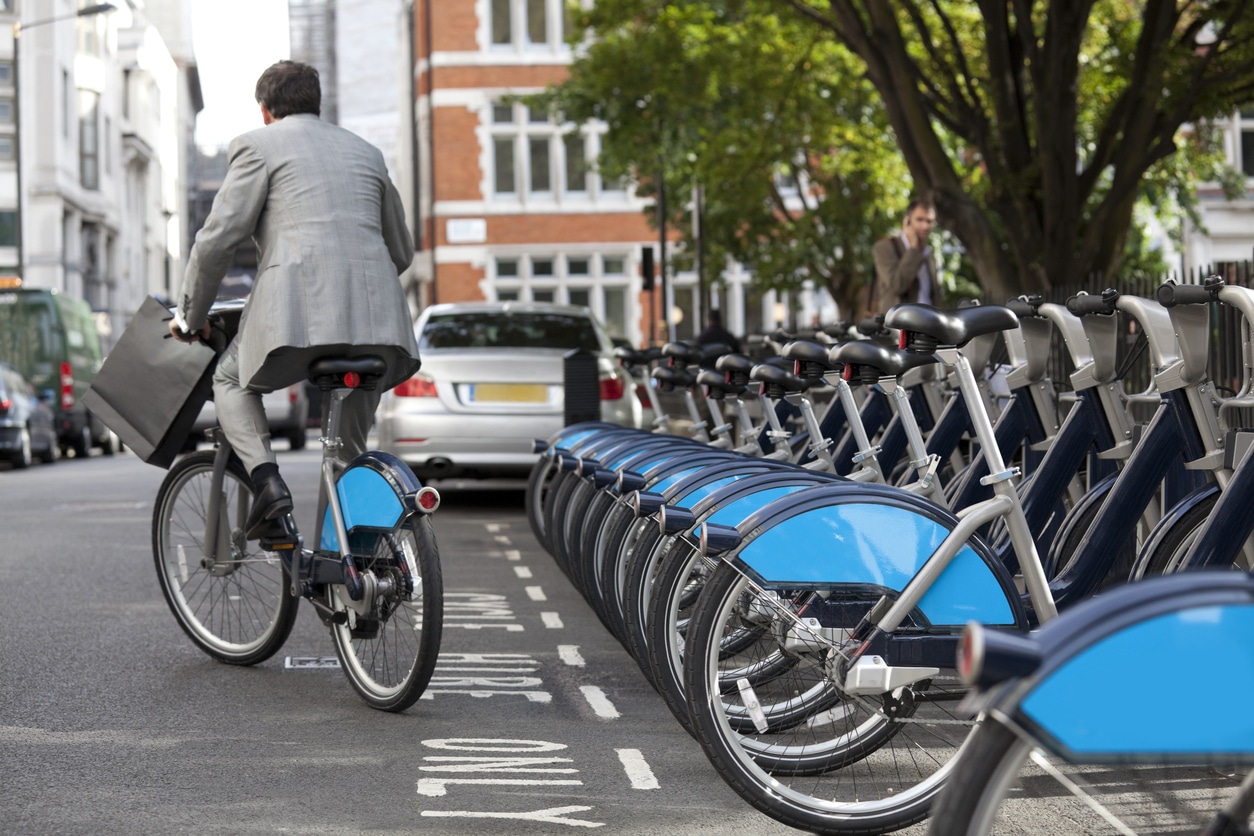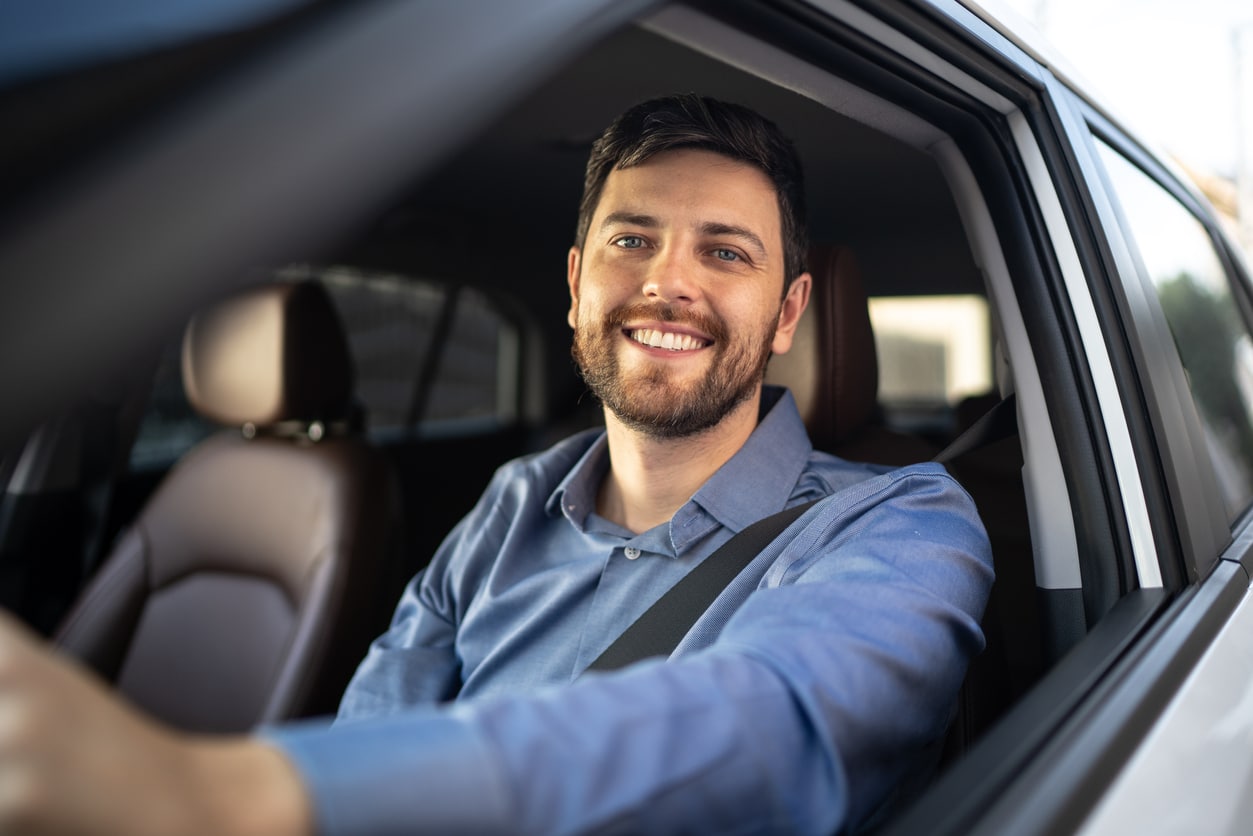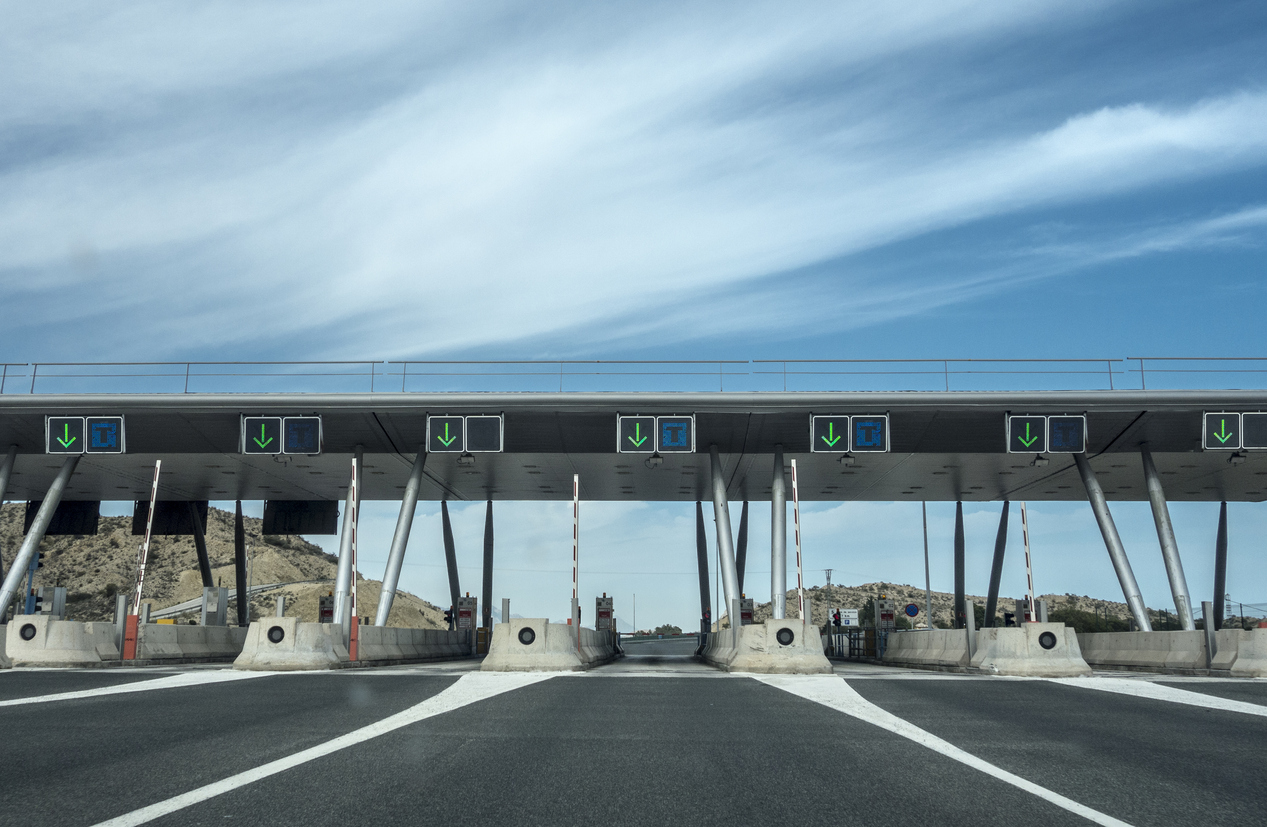Use cases
Whether you are in telecommunications, transportation, insurance, finance, infrastructure…, you can leverage our technology.
The Net4things´ Cross-Mobility Platform (XMP) is a SaaS that leverages mobility data to enable you to build, launch and scale a wide range of use cases that can benefit both you and your customers. This will allow you to increase efficiency and revenues, reduce costs, enhance your customer relationships and contribute to a more sustainable mobility.
Examples of use cases
Can’t see the use case you’re looking for? This is only a list of examples.
Contact us to explore all our possibilities, including tailor-made ones.
Fleet & sharing management
Connected vehicles can be effectively managed at the dealer’s lot when information about location, test drives, out-of-office usage and engine status is joined.
Activity reports facilitate the operation of large fleets, reducing time consuming tasks and improving the overall understanding of the fleet’s performance.
Voluntary and compulsory maintenance can be overseen by fleet owner. The aggregation of manufacturer data with mobility data and engine status can optimize scheduling and save on auto parts replacement.

Fleet & sharing management
Connected vehicles can be effectively managed at the dealer’s lot when information about location, test drives, out-of-office usage and engine status is joined.
Activity reports facilitate the operation of large fleets, reducing time consuming tasks and improving the overall understanding of the fleet’s performance.
Voluntary and compulsory maintenance can be overseen by fleet owner. The aggregation of manufacturer data with mobility data and engine status can optimize scheduling and save on auto parts replacement.
Consumer value-added services
Some mobility vehicles such as cars and motorbikes come along with big expenses including repairs, tire replacements or simply selling or acquiring a new vehicle, that can be subject to financial services (loans…).
Combined usage data and vehicle status information is the best unbiased predictor for the value of a connected vehicle during its lifetime.
A connected vehicle, along with information about the owner, can generate significant insights about lifestyle and help dealerships and automotive brands recommend the most appropriate vehicle for renewal.
With information about location and start-stop engine events from connected vehicles, information maps can be enhanced to include areas with the highest probability of finding on-street and off-street parking.
Either as standalone or as a complement to your in-car entertainment system, concierge services connect individuals on the move with their digital lives (restaurant and hotel reservations, flight status, agendas, etc.).
Adding a WiFi hotspot to a vehicle for in-car connectivity adds significant value to a wide range of mobility services.
Mobility services enhance functionality and usability of digital services like e-wallets, fintech and insurtech propositions, etc., and vice versa.
A key aspect of design, implementation and operation of a mobility service is customer billing, which has to be carefully integrated with the transactional mobility platform.
Mobility service platforms are ideal for establishing a trusted and secure communication hub for the different stakeholders providing services (car dealers, automakers and roadside assistance).
Historic mobility data along with information about the vehicle and engine status are good predictors of potential issues for preemptive maintenance, giving car owners peace of mind.
Voluntary and compulsory maintenance can be overseen by car owners. The aggregation of manufacturer data with mobility data and engine status can optimize scheduling and save on auto parts replacement.
Connecting users in need with the right merchant through a fully digital experience maximizes the conversion rate of the services offered.
Functionality to tag any trip as a business expense and export the details to a spreadsheet for accounting or tax purposes.
Getting a certified usage report can ease the purchase of a secondhand vehicle, increasing the value for the seller and boosting the confidence of the buyer.
Tracking stolen vehicles drastically increases the probability of getting them back during the first 48h.
Based on mobility data trends for both ICE and EV vehicles, optimal locations for fuel and EV charging stations can be determined. Drivers can be advised on the next best station on the basis of route and fuel/battery status.
Easy-to-understand RoadScore rating for each trip, as well as a rolling average, based on how safely the vehicle is being driven.

Consumer value-added services
Some mobility vehicles such as cars and motorbikes come along with big expenses including repairs, tire replacements or simply selling or acquiring a new vehicle, that can be subject to financial services (loans…).
Combined usage data and vehicle status information is the best unbiased predictor for the value of a connected vehicle during its lifetime.
A connected vehicle, along with information about the owner, can generate significant insights about lifestyle and help dealerships and automotive brands recommend the most appropriate vehicle for renewal.
With information about location and start-stop engine events from connected vehicles, information maps can be enhanced to include areas with the highest probability of finding on-street and off-street parking.
Either as standalone or as a complement to your in-car entertainment system, concierge services connect individuals on the move with their digital lives (restaurant and hotel reservations, flight status, agendas, etc.).
Adding a WiFi hotspot to a vehicle for in-car connectivity adds significant value to a wide range of mobility services.
Mobility services enhance functionality and usability of digital services like e-wallets, fintech and insurtech propositions, etc., and vice versa.
A key aspect of design, implementation and operation of a mobility service is customer billing, which has to be carefully integrated with the transactional mobility platform.
Mobility service platforms are ideal for establishing a trusted and secure communication hub for the different stakeholders providing services (car dealers, automakers and roadside assistance).
Historic mobility data along with information about the vehicle and engine status are good predictors of potential issues for preemptive maintenance, giving car owners peace of mind.
Voluntary and compulsory maintenance can be overseen by car owners. The aggregation of manufacturer data with mobility data and engine status can optimize scheduling and save on auto parts replacement.
Connecting users in need with the right merchant through a fully digital experience maximizes the conversion rate of the services offered.
Functionality to tag any trip as a business expense and export the details to a spreadsheet for accounting or tax purposes.
Getting a certified usage report can ease the purchase of a secondhand vehicle, increasing the value for the seller and boosting the confidence of the buyer.
Tracking stolen vehicles drastically increases the probability of getting them back during the first 48h.
Based on mobility data trends for both ICE and EV vehicles, optimal locations for fuel and EV charging stations can be determined. Drivers can be advised on the next best station on the basis of route and fuel/battery status.
Easy-to-understand RoadScore rating for each trip, as well as a rolling average, based on how safely the vehicle is being driven.
Advanced driver assistance systems (ADAS)
Access to real-time information about location and driving style for different family members.
Embedded data sensors and additional accessories can identify the early warning signs of distracted driving and interact with vehicle systems or remote assistance services.
The combination of data from specific motion sensors in a vehicle with airbag activation or aftermarket devices can automatically detect a crash, filter events and automatically call specialized emergency assistance.
Mobility data and engine status can be tracked and used by roadside assistance companies to plan resources and provide better service for drivers.
Moving vehicles provide the best insights regarding current traffic conditions. Sharing this real-time data enables better decision making.
Smart control of restricted traffic areas based on real emissions benefits neighbours, drivers and the environment.
Data directly extracted from vehicle systems, combined with environmental and mobility data, are the basis for important warning systems like incorrect seat belt attachments or unsupervised babies inside a vehicle.
Vehicle sensors can register and monitor driving style for new driver assessment by driving schools or convicted drivers by law enforcement institutions.

Advanced driver assistance systems (ADAS)
Access to real-time information about location and driving style for different family members.
Embedded data sensors and additional accessories can identify the early warning signs of distracted driving and interact with vehicle systems or remote assistance services.
The combination of data from specific motion sensors in a vehicle with airbag activation or aftermarket devices can automatically detect a crash, filter events and automatically call specialized emergency assistance.
Mobility data and engine status can be tracked and used by roadside assistance companies to plan resources and provide better service for drivers.
Moving vehicles provide the best insights regarding current traffic conditions. Sharing this real-time data enables better decision making.
Smart control of restricted traffic areas based on real emissions benefits neighbours, drivers and the environment.
Data directly extracted from vehicle systems, combined with environmental and mobility data, are the basis for important warning systems like incorrect seat belt attachments or unsupervised babies inside a vehicle.
Vehicle sensors can register and monitor driving style for new driver assessment by driving schools or convicted drivers by law enforcement institutions.

Location & tracking
In open working spaces like construction sites, mining exploitation, etc., tracking and control of the right usage of vehicles and tools by the right worker is important.
In situations where people need to be permanently locatable: safety, health condition, law enforcement, etc. Events can be triggered when certain conditions are met.
When valuable goods are on the move, it’s important to track location and conditions (temperature, humidity, etc.). Using historical and contextual data can help make real-time decisions about the right travel route.
Access to real-time information about the location of pets provides insights on their health and safety.
Location & tracking
In open working spaces like construction sites, mining exploitation, etc., tracking and control of the right usage of vehicles and tools by the right worker is important.
In situations where people need to be permanently locatable: safety, health condition, law enforcement, etc. Events can be triggered when certain conditions are met.
When valuable goods are on the move, it’s important to track location and conditions (temperature, humidity, etc.). Using historical and contextual data can help make real-time decisions about the right travel route.
Access to real-time information about the location of pets provides insights on their health and safety.

Digital marketing
Marketing campaigns can be defined (term, targets, content, triggers) for the whole connected customer base, with a higher conversion rate than traditional CRM/marketing strategies.
Customer applications for mobility services become digital inventories for mobile advertisement that agencies can use to their advantage.
Customer engagement strategies for mobile service users can include the right content selection based on mobility data.
Ability to build an advertising campaign in minutes with accurate, categorized and actionable mobility data both on-app (leveraging open interface) and off-app through third-party platforms (leveraging Google Analytics).
Digital marketing
Marketing campaigns can be defined (term, targets, content, triggers) for the whole connected customer base, with a higher conversion rate than traditional CRM/marketing strategies.
Customer applications for mobility services become digital inventories for mobile advertisement that agencies can use to their advantage.
Customer engagement strategies for mobile service users can include the right content selection based on mobility data.
Ability to build an advertising campaign in minutes with accurate, categorized and actionable mobility data both on-app (leveraging open interface) and off-app through third-party platforms (leveraging Google Analytics).

Usage-based insurance (UBI)
Based on mobility data that reflects driving style (accelerations, decelerations, harsh turns, etc.), risk factors can be determined for the insurance sector.
Based on mobility data from a vehicle taken before, during and after a crash, an automatic forensic report can be sent to relevant parties.
Determine the price of insurance benefitting the drivers who use the vehicle less, making it more appealing.
Determine the price of insurance based on driving behaviour data related to, for example, acceleration, braking, speeding, cornering… favouring the best drivers.
Usage-based insurance (UBI)
Based on mobility data that reflects driving style (accelerations, decelerations, harsh turns, etc.), risk factors can be determined for the insurance sector.
Based on mobility data from a vehicle taken before, during and after a crash, an automatic forensic report can be sent to relevant parties.
Determine the price of insurance benefitting the drivers who use the vehicle less, making it more appealing.
Determine the price of insurance based on driving behaviour data related to, for example, acceleration, braking, speeding, cornering… favouring the best drivers.

Business insights
Aggregated information about mobility trends and the status of different models and brands can be easily assessed with the data consolidation of different OEMs and aftermarket players, such as telcos, finance companies, etc.
Mobility data, when processed properly, provides outstanding information regarding the habits and trends of users, opening new business opportunities.
Leveraging a new source of mobility data that has been processed, unified and standardized by our platform enables the development of business insights.
Business insights
Aggregated information about mobility trends and the status of different models and brands can be easily assessed with the data consolidation of different OEMs and aftermarket players, such as telcos, finance companies, etc.
Mobility data, when processed properly, provides outstanding information regarding the habits and trends of users, opening new business opportunities.
Leveraging a new source of mobility data that has been processed, unified and standardized by our platform enables the development of business insights.

Urban & infrastructure planning
Sensor data from connected vehicles and harsh maneuvers from drivers can give accurate locations of potholes and black spots.
Urban road user charging enables charging drivers for the use of roads they drive on. The charges are designed to reduce traffic congestion (and its associated problems).
Road infrastructure companies can get more out of their toll businesses by implementing dynamic pricing, based on aggregate traffic and priority lanes.
Being able to handle in a single platform all sort of vehicles is key to achieve multimodal transportation and provide mobility services fulfilling today’s users needs.
The public transportation authority can automatically change bus routes, time intervals and fees depending on current demand.
The ecological footprint of urban mobility can be predicted based on current and historical mobility data, combined with weather predictions and vehicle characteristics.
Real-time aggregated vehicle mobility data combined with street cameras, weather data and public roadwork information can generate a predictive model to better operate traffic lights.
Connected vehicles and people generate aggregated data that predicts unauthorized concentrations in restricted areas.
Dynamic raw and elaborated mobility data is a valuable input for AV systems as unbiased training sets.
A reasonable plan for deploying charging stations is critical for the widespread use of electric vehicles and cost optimization of the infrastructure providers.
Urban & infrastructure planning
Sensor data from connected vehicles and harsh maneuvers from drivers can give accurate locations of potholes and black spots.
Urban road user charging enables charging drivers for the use of roads they drive on. The charges are designed to reduce traffic congestion (and its associated problems).
Road infrastructure companies can get more out of their toll businesses by implementing dynamic pricing, based on aggregate traffic and priority lanes.
Being able to handle in a single platform all sort of vehicles is key to achieve multimodal transportation and provide mobility services fulfilling today’s users needs.
The public transportation authority can automatically change bus routes, time intervals and fees depending on current demand.
The ecological footprint of urban mobility can be predicted based on current and historical mobility data, combined with weather predictions and vehicle characteristics.
Real-time aggregated vehicle mobility data combined with street cameras, weather data and public roadwork information can generate a predictive model to better operate traffic lights.
Connected vehicles and people generate aggregated data that predicts unauthorized concentrations in restricted areas.
Dynamic raw and elaborated mobility data is a valuable input for AV systems as unbiased training sets.
A reasonable plan for deploying charging stations is critical for the widespread use of electric vehicles and cost optimization of the infrastructure providers.
